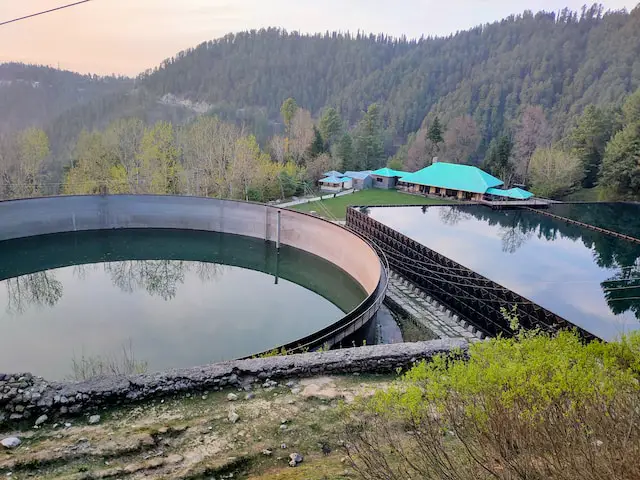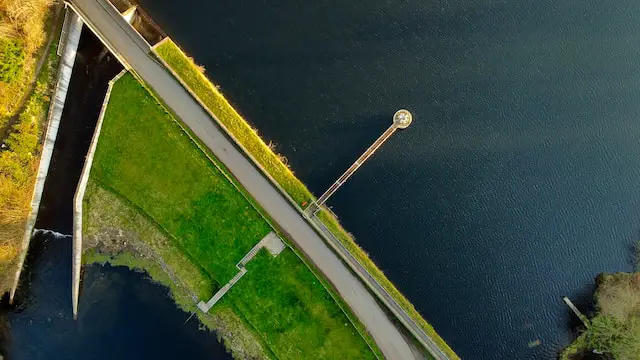Aquifers are natural underground storage areas made up of porous rocks that hold groundwater. They provide a sustainable source of water supply and can be recharged by rainfall or other surface waters, making them an environmentally friendly option. Reservoirs are man-made impoundments built on rivers or streams to store surface water.
What is an Aquifer?
An aquifer is an underground layer of permeable rock or sediment that stores and transmits groundwater. These layers are formed over thousands of years through a natural process called infiltration, where water from precipitation and other sources seeps into the ground and accumulates beneath the surface. Aquifers can range in size from small local systems to massive regional ones that span multiple states or even countries.
One important aspect of aquifers is their ability to recharge naturally as rainfall infiltrates the ground above them. However, many aquifers are being depleted at unsustainable rates due to human usage and climate change impacts such as droughts.
There are three main types of aquifers: Unconfined, Confined, and Perched.
Unconfined aquifers have no impervious layer separating them from the surface, while confined aquifers are sandwiched between impermeable rock layers. Perched aquifers occur when a less-permeable layer sits atop a more-permeable one.
Understanding how these vital underground systems work is crucial for ensuring sustainable management practices to safeguard our future water supply.
What is a Reservoir?
(Photo by Zobia Shakar on Unsplash )

A reservoir is a human-made or natural body of surface water that is used to store water for various purposes. They can be found in rivers, streams, and other bodies of water where they are formed behind dams. Reservoirs are also created by excavating the land and constructing barriers to hold the water.
The primary function of a reservoir is to provide a reliable source of freshwater supply for irrigation, urban consumption, and hydroelectric power generation. Additionally, they serve as recreational areas such as fishing spots and boating activities.
Reservoirs come in different shapes and sizes depending on their intended purpose. Some are small enough to fit into your backyard while others are large lakes like Lake Mead which supplies drinking water for millions of people.
Reservoirs play an essential role in providing clean freshwater for daily use while also helping control floods during heavy rains.
Aquifer Vs. Reservoir – Key differences
Aquifers and reservoirs are two important sources of water, but they differ in several ways. Aquifers are natural underground layers of rock or sand that hold groundwater, while reservoirs are human-made structures that store surface water from rivers or lakes.
One key difference between the two is their location. Aquifers are located beneath the ground, while reservoirs can be found on the surface of the earth. Another major difference is their size and capacity. Reservoirs tend to be much larger than aquifers and have a greater storage capacity for water.
Aquifers also tend to recharge naturally through precipitation and seepage from nearby streams or lakes, whereas reservoirs require regular maintenance to maintain their water levels. Additionally, aquifer systems flow more slowly than those in a typical reservoir due to being underground.
In terms of usage, aquifer water tends to be used for drinking purposes as it is less likely to be contaminated by pollutants since it is filtered through rocks before reaching wells. On the other hand, reservoir waters may contain higher levels of contaminants such as algae blooms because they collect runoff from various sources above ground.
What are the types of Reservoirs?
Reservoirs are classified based on their origin, location, and the purpose they serve. There are different types of reservoirs constructed for various reasons such as irrigation, water supply, hydroelectric power generation and more.
The first type of reservoir is a natural or freshwater lake. These lakes form naturally by geological processes such as glacial erosion or volcanic activities. They can also be formed through human-made structures like dams that block rivers to create artificial lakes.
Secondly, there are service reservoirs that store treated drinking water for local distribution systems. Such reservoirs hold potable water under moderate pressure which allows it to flow through pipes in homes and businesses.
Thirdly, agricultural storage ponds are commonly used in farming communities to irrigate crops during dry seasons or drought conditions. They collect rainwater runoff from fields then release it gradually into the soil to penetrate plant roots and provide much-needed moisture.
Hydroelectric power plants use impoundment reservoirs which enable them to control the amount of water flowing through turbines thus generating electricity consistently at a steady rate.
Understanding the different types of reservoirs is important because each type serves its specific purpose – whether it’s storing freshwater for human consumption or providing enough energy to power entire cities.
What are the 3 types of aquifers?
Aquifers are underground layers of rock or sediment that can hold and transmit water. There are three main types of aquifers, each with distinct characteristics.
The first type is unconfined aquifers, which have a permeable layer on top exposed to the surface. These aquifers are often recharged by precipitation and can be found in river valleys or near lakes.
The second type is confined aquifers, which are sandwiched between two impermeable layers of rock or clay. This makes them less susceptible to contamination but also harder to access for human use.
There are artesian aquifers, which occur when water is trapped under pressure between two impermeable layers of rock. When a well penetrates one of these layers, the water rises naturally without any pumping required.
Each type of aquifer has its own unique characteristics and challenges for management and conservation efforts. Understanding these differences is crucial in ensuring sustainable use and protection of our precious groundwater resources.
The advantages of aquifers and reservoirs
Aquifers and reservoirs are both essential sources of water that offer unique advantages. One significant advantage of aquifers is their ability to store water underground, making it less susceptible to evaporation than surface water. This means that even during droughts, stored groundwater in aquifers can still be accessed for various uses such as irrigation and drinking.
Reservoirs also provide numerous benefits such as flood control and hydroelectric power generation. Reservoirs act as natural buffers to reduce the damage caused by floods while providing a reliable source of renewable energy through hydropower plants built nearby.
Additionally, both aquifers and reservoirs help stabilize water supply during dry seasons or drought periods. They allow for more efficient use of available resources while reducing dependence on seasonal rainfall patterns.
Moreover, aquifer recharge projects can further enhance the quality of groundwater supplies by filtering out impurities before replenishing aquifer levels with fresh rainwater or treated wastewater.
Whether we are talking about an underground storage system like an aquifer or a surface-level mass like a reservoir, there’s no denying that these vital sources play crucial roles in ensuring the availability and sustainability of our planet’s freshwater resources.
Featured Image By – Jack French on Unsplash








